The warmth of springtime is fast approaching, and our thoughts are naturally turning towards spending more time outside. If you have a wooden terrace or balcony in your outdoor space, you’re probably starting to imagine all the barbecues and small gatherings that you might enjoy over the summer months.
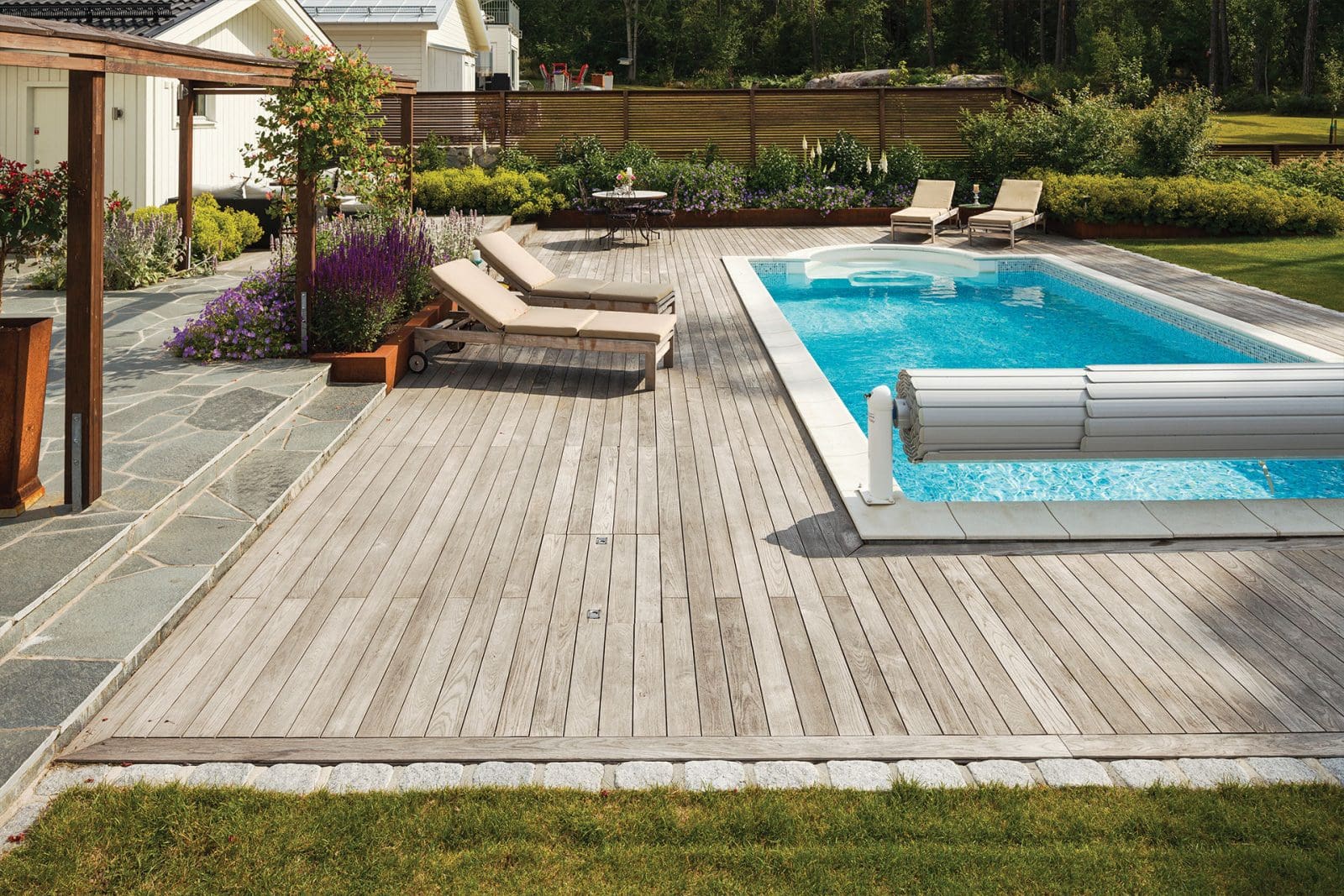
With that in mind, now feels like the perfect time to remind you about some simple strategies you can use to keep your thermally modified decking in the best possible condition, so that it gives you many more years of enjoyment. To help you, we’ve dipped into our decking maintenance guide and picked out some key pointers.
As well as giving it a beautiful deep shade, thermal modification naturally enhances the durability and stability of wood right to the core, making it ideal for outdoor use. Using the proper installation and maintenance techniques will maximize the longevity of your thermally modified wood decking, so always remember to follow the instructions that come with your Thermory products!
Make sure that your terrace is kept free of leaves, needles and other debris that might get moldy. It’s also important to note that spilled household chemicals, food and drinks may stain the surface, which can also get scratched by your pet’s claws or high heels. Most of these will fade over time, but any deeper stains or scratches can be easily removed by lightly sanding the area – needless to say, if the boards were oiled then you’ll need to apply a new layer after doing this.
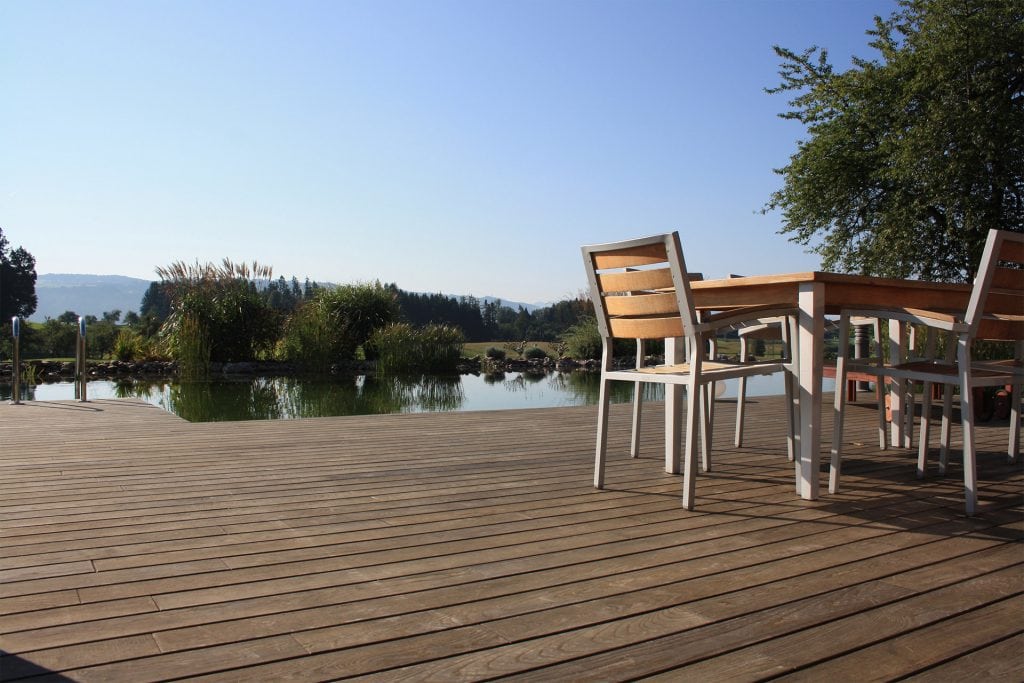
Although it’s not strictly necessary to treat your thermally modified decking, doing so regularly will keep it looking fresh, help it retain its natural shade and make it easier to clean. Generally, once a year should be enough.
How often you need to do this will depend on a number of factors including:
It’s a good idea to clean your decking regularly and to do any maintenance work before the start of the summer season when it will likely see more action. It’s also best to do the work during warmer weather as the boards should be dry before you apply any oil or other surface treatments. If you’re oiling your deck, don’t do it when it’s too windy or too hot, as this may cause the oil to dry before it’s had a chance to seep into the wood.
Sustainability is important for us at Thermory. We enhance our products naturally, without chemicals, and when maintaining your decking boards we recommend that you use water-based products as an environmentally friendly and healthier alternative to solvent-based ones.
Thermally modified boards can be simply washed with a wood cleaning product and warm water – if it’s particularly dirty you may also require a brush. Then, rinse with a garden hose on the spray setting. Use a low water pressure and test it on a small area beforehand to ensure it doesn’t cause damage – a strong jet of water can make the surface of the wood visibly uneven.
Once it’s clean, make sure that your deck is nice and dry before carrying out any more maintenance work.
Like any wooden products, thermally modified wood will turn gray over time – don’t worry though, this won’t affect the durability of your deck, and you can prevent this using a UV-resistant finish if you want to. Regularly finishing the wood with oil or another protective product will also prevent it from cracking and help it repel water and dirt.
If you’re treating wood that’s already discolored, lightly sanding the boards will remove the gray from the surface and bring out its deeper original tone – or if you’re happy for the wood to fade over time but you’d like to protect it from cracking, you can choose a colorless oil instead.
If you want to maintain (or change) the color of your thermally modified wood, make sure that you only apply the treatment to a clean, dust-free surface. You can protect your Thermory decking boards by coating them with a UV-resistant pigmented finish, such as a wax, stain, paint or mineral oil, and a darker-colored finish will help to reduce discoloration. We don’t recommend using organic oils outdoors however, as they provide nutrition for biological organisms like bacteria and mold.
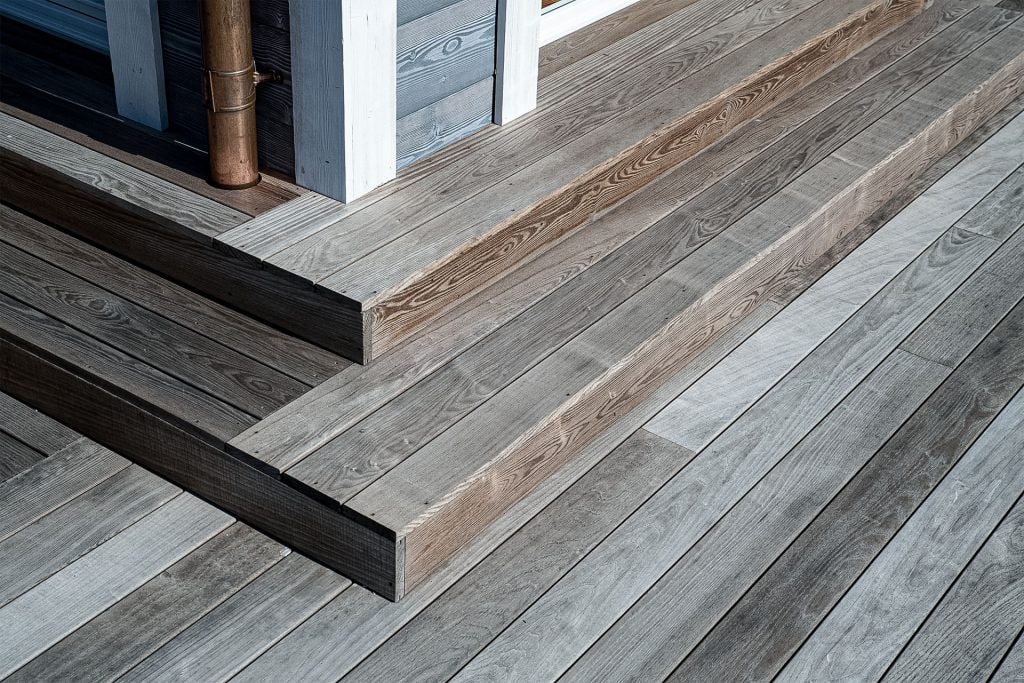
While this article provides some handy general guidelines, remember to always read and follow the oil manufacturer’s instructions, as the ideal application method and drying times may vary from one product to another.
Before you get started, remove all furniture and other items from the deck and cover any plants or grass around the edges to protect them from cleaning agents and oil, then clean any dust or dirt from the surface using a brush and some water, as well as a wood cleaning product if needed. If you find any moss, remove this too – you might find that a scrubbing brush or terrace cleaning machine helps.
Start with a clean and dry surface, and select a suitable tool such as a brush, sponge or mop. If you’re using tinted oil, we recommend stirring it thoroughly and testing it on a small area first to ensure that it’s the right shade – and if you need more than one can, mix them together to ensure an even tone. You’re now ready to begin the oil treatment.
Stirring the oil occasionally as you go, apply a thin layer to the decking boards – be careful not to apply too much at once. Start at one edge and make your way over the entire deck, one board at a time. If you notice that too much oil is pooling in certain areas, wipe up any excess with a cloth before it dries – be especially careful if you’re oiling ribbed decking, as thick layers of oil can gather in the grooves. One or two layers should be enough – if you haven’t maintained your deck for a while, it’s best to apply a double coat. Once the deck is dry, replace your furniture and enjoy!
So there you have it – now you know how to keep your Thermory deck in tip-top condition for all of those snapshot summer moments!
Rooftop spaces...
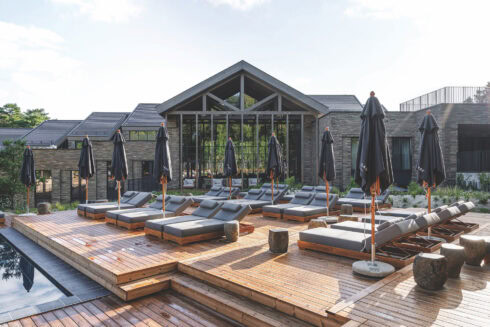
Wood decking adds...
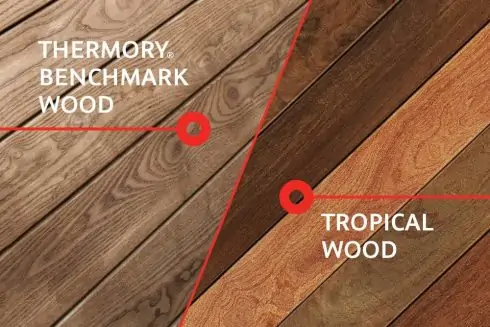
As the construction and design industries evolve, so does the demand for sustainable, high-performance building materials. For over 25 years, Thermory has...
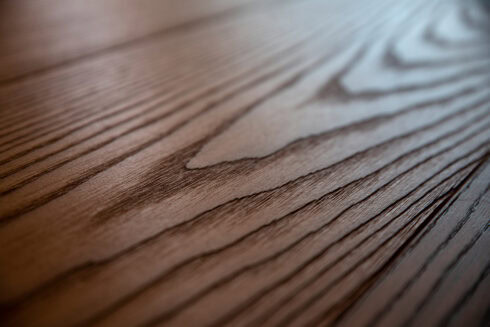
Picture a wood that balances elegance, durability and versatility – a natural material that not only meets your demands but also exceeds your...
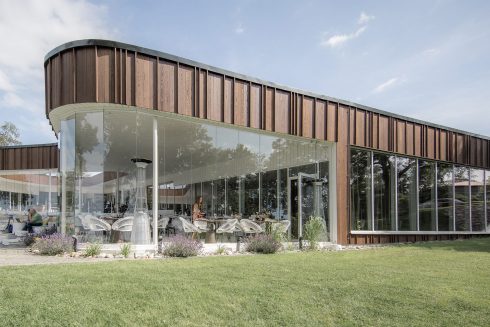
Combining different wood species, finishes and profiles brings variety to any interior or exterior design, delivering a tantalizing injection of texture and...
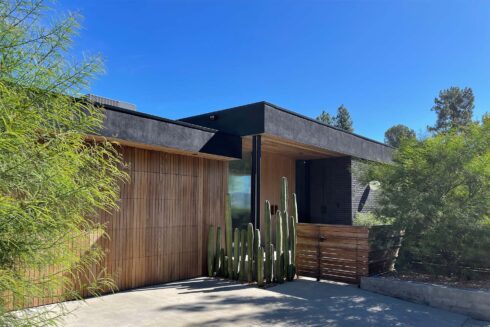
We were curious about the architecture trends and the popularity of timber in Australia, so we asked our down under partner, McCormacks Australia, to tell...
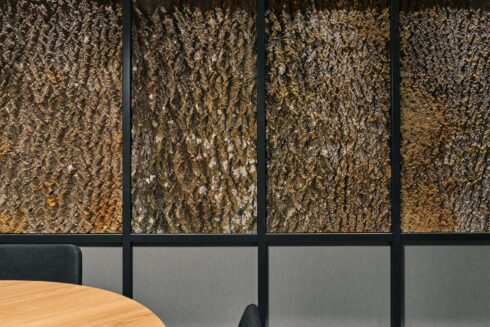
In the quest to shift our world towards more sustainable practices and circular processes, designers are increasingly turning their attention to...
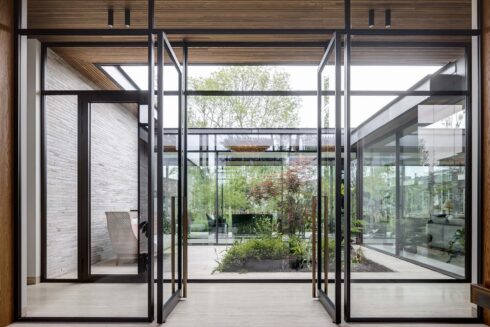
As architects and landscape designers, creating indoor outdoor living spaces that are sustainable and eco-friendly is more important than ever. With a...
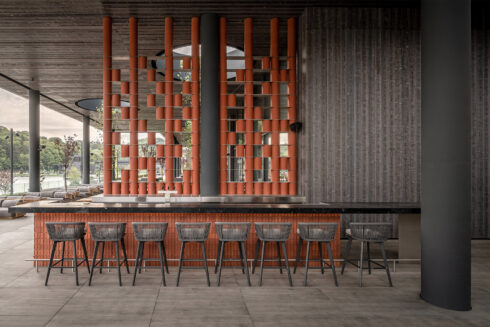
Thermory Design Awards is part of Thermory 25 celebrations for acknowledging and rewarding our...

Curators of Tallinn Architecture Biennale 2022 exhibition “Edible ; Or, The Architecture of Metabolism”, Lydia Kallipoliti & Areti...
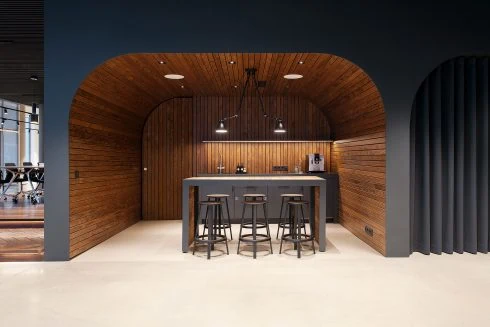
The aim of biophilic design is to create buildings and spaces that enable harmonious, naturally enjoyable experiences for their users by promoting the...
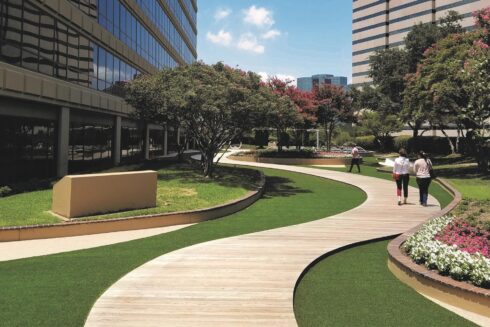
The purpose of biophilic design is to create spaces that deliver benefits for both human health and the environment by nurturing people’s innate affinity...
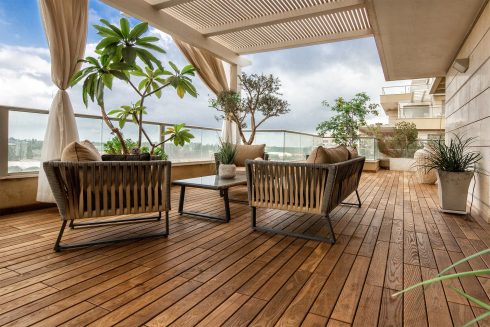
Introduce comfort, style and practicality into your outdoor space so that you can enjoy more time in the fresh air during the coming warmer...
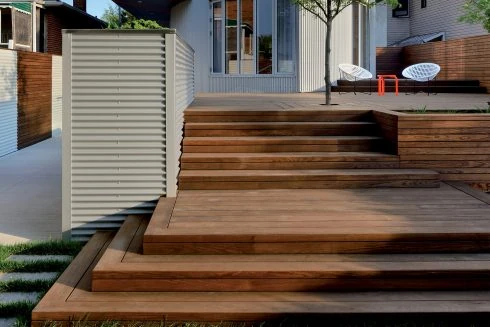
Summer is just around the corner, and as we eagerly look out to see the evidence of rising temperatures, that can only mean one thing...
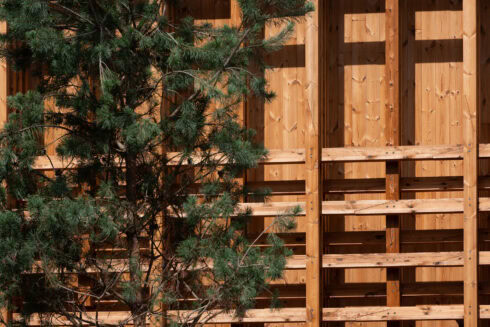
When it comes to...
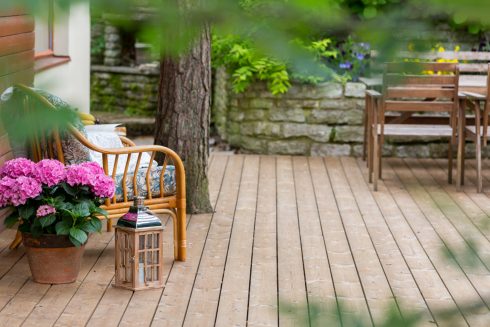
Home is where the heart is – a place where the whole family can feel safe and warm. The building materials you choose should enhance this feeling and...

Wood is one of the most common building materials in the world and, with responsible forest management, it is the only renewable building material we have....
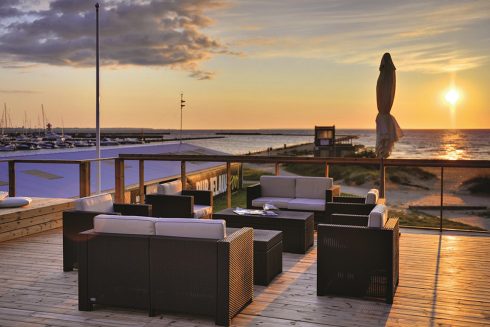
The decking in your home bears witness to numerous magnificent and memorable moments. On warm days we sit on the deck and bask in the sunshine, at night we...
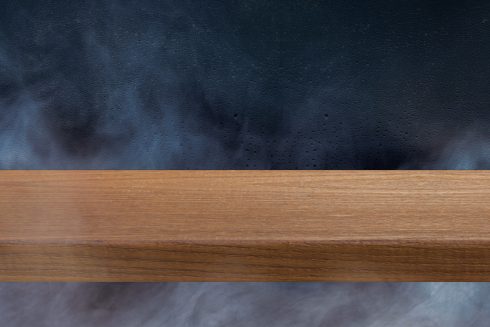
Thermally modified wood, often referred to as thermowood, is real wood enhanced using only heat and steam to improve its durability, dimensional stability,...
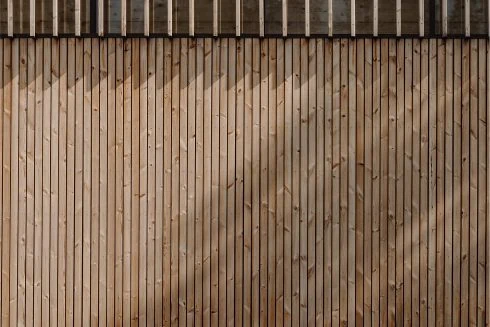
With rising concerns about climate change, the world community’s responsibility to reduce our carbon footprint rests with each and every individual and...
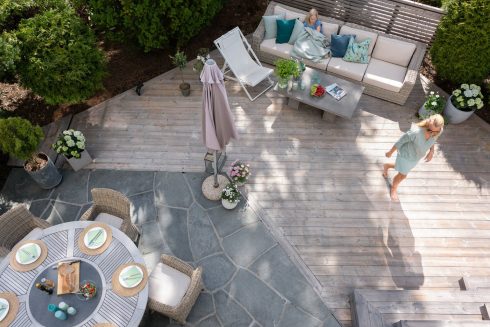
As a natural material, the color of wood alters over time – and there is no exception with Thermory’s thermally modified wood products, which gradually...
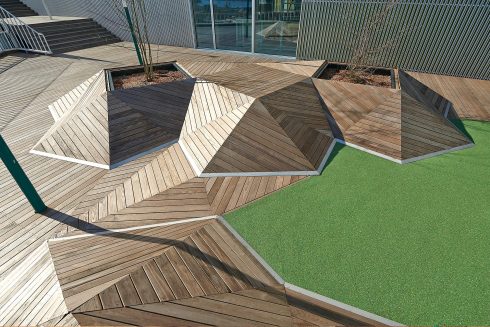
You’ve selected the perfect decking for your outdoor space – now you just need to decide how best to secure it in its chosen location. There are two...

Wood is a sustainable and versatile material with an almost limitless range of uses, including construction, tools, paper and fuel to name just a few. But...

Ensuring the highest quality with the smallest possible ecological footprint and responsible use of resources are all principles that we consider important...
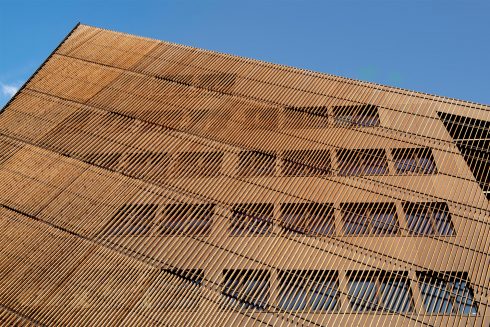
Throughout the history of architecture, surely no other material has been as influential as wood. It’s rare to see a building that’s been produced...
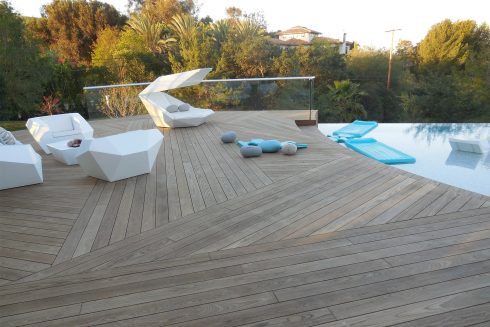
When considering how you’ll lay your new deck, there are many more options to decide between than simple vertical or horizontal alignment. In fact, with a...
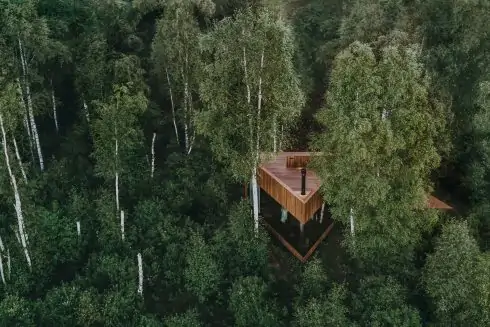
A trend is taking root in the worlds of architecture and interior design based on using natural materials and living plants to better...
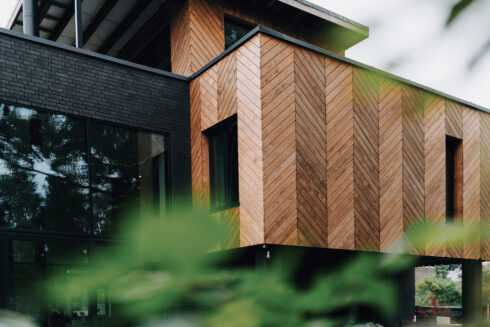
If you’re considering which wood types to use for a renovation or construction project, there are several considerations that may influence your decision...
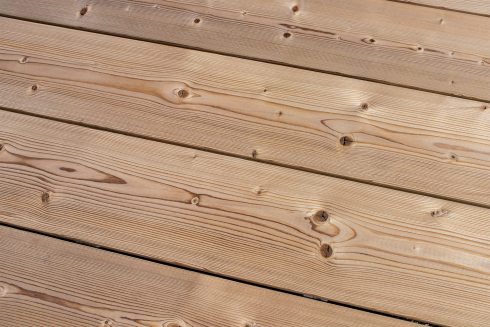
The wood-paneled interiors so common to mid-century homes have become sought after again, as many seek the warm, cozy feeling that the natural material...
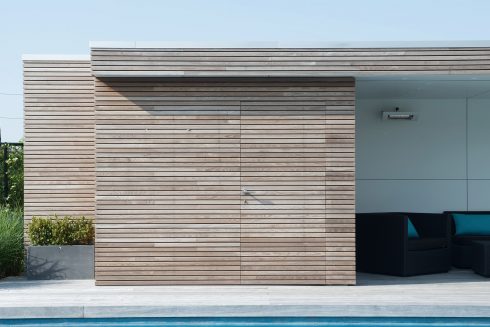
PaCS (Press and Click System) product ranges combine high-quality Thermory thermowood with the unique installation system by Grad. It is a popular hidden...
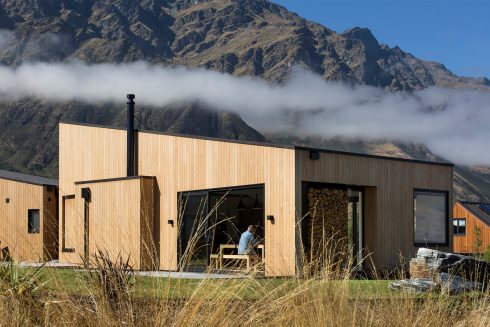
No matter where you live when you’re choosing a decking or cladding material, you’ll have to be mindful of how that material will change over time...
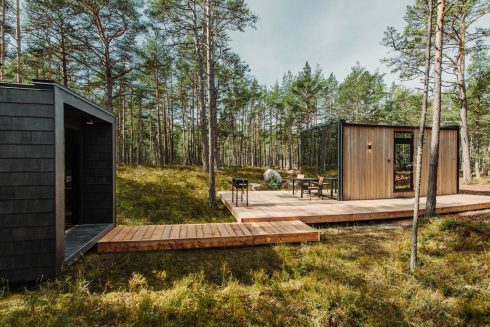
The tiny house movement has gained more momentum in the last decade, but why? It is based on tiny living: owning less so that what you own doesn’t own...

In 2022, the global megatrend of sustainable architecture and building practices will continue. Architecture trends influence the choice of materials both...